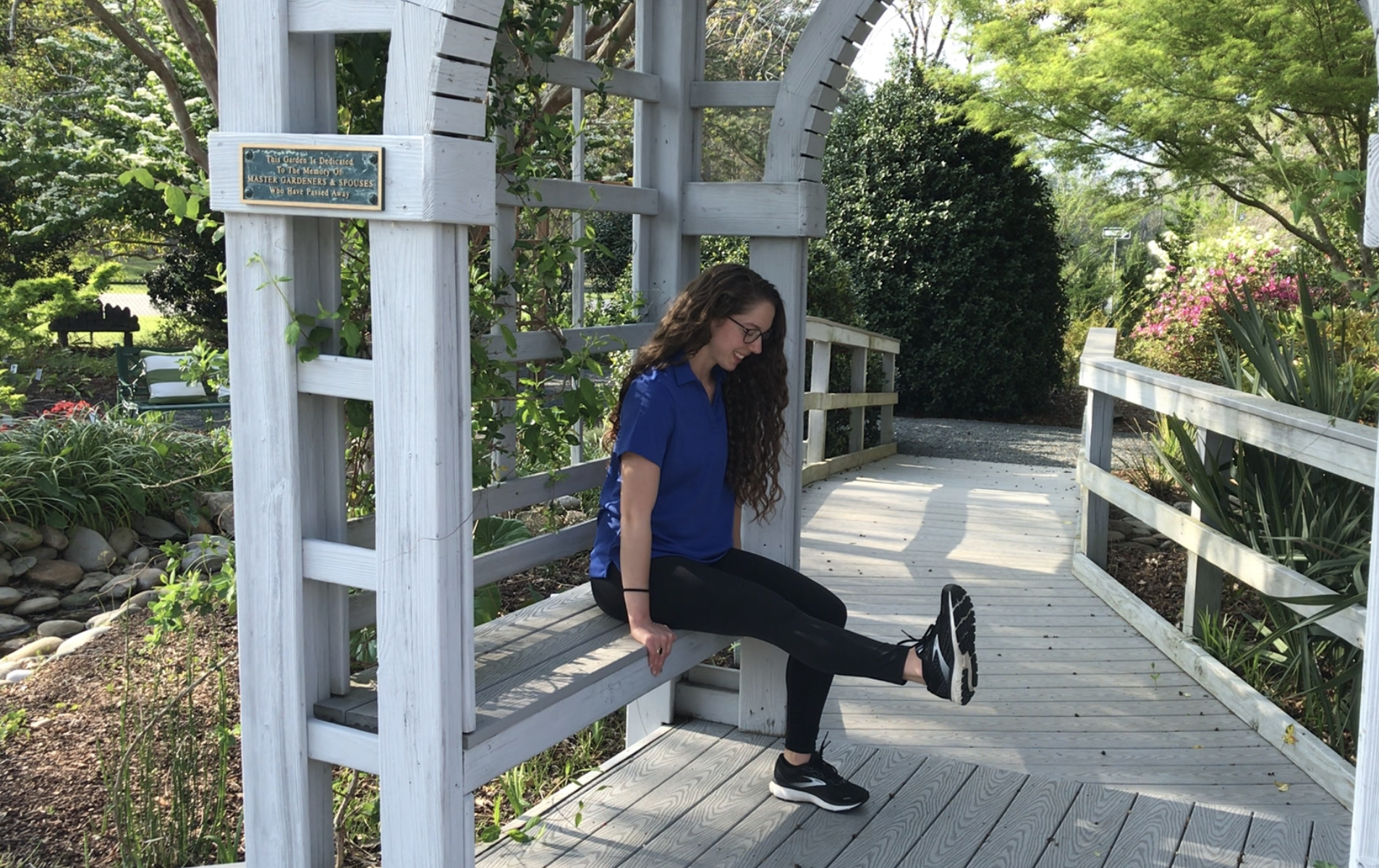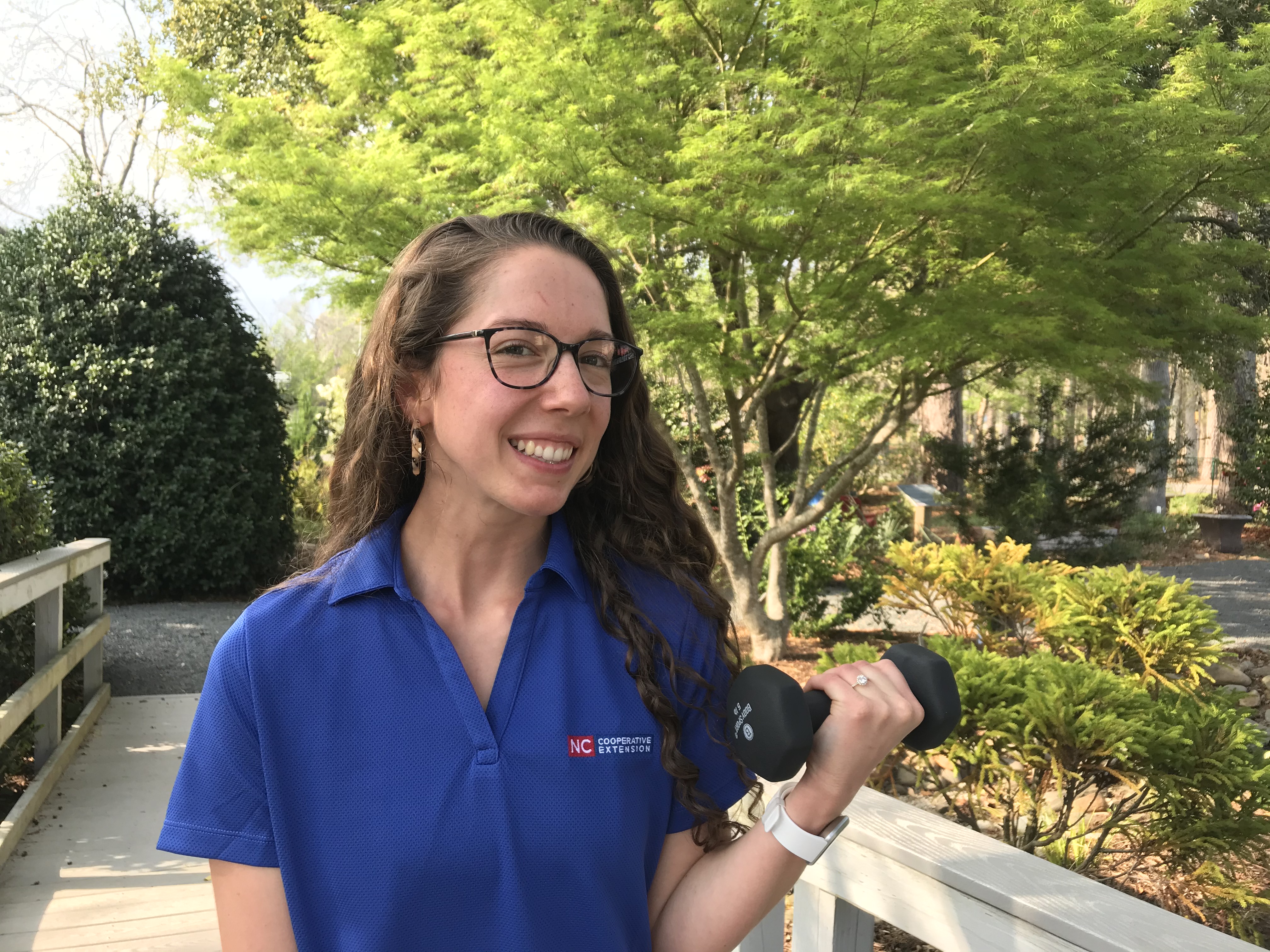Virtual Strength Training
go.ncsu.edu/readext?861875
en Español / em Português
El inglés es el idioma de control de esta página. En la medida en que haya algún conflicto entre la traducción al inglés y la traducción, el inglés prevalece.
Al hacer clic en el enlace de traducción se activa un servicio de traducción gratuito para convertir la página al español. Al igual que con cualquier traducción por Internet, la conversión no es sensible al contexto y puede que no traduzca el texto en su significado original. NC State Extension no garantiza la exactitud del texto traducido. Por favor, tenga en cuenta que algunas aplicaciones y/o servicios pueden no funcionar como se espera cuando se traducen.
Português
Inglês é o idioma de controle desta página. Na medida que haja algum conflito entre o texto original em Inglês e a tradução, o Inglês prevalece.
Ao clicar no link de tradução, um serviço gratuito de tradução será ativado para converter a página para o Português. Como em qualquer tradução pela internet, a conversão não é sensivel ao contexto e pode não ocorrer a tradução para o significado orginal. O serviço de Extensão da Carolina do Norte (NC State Extension) não garante a exatidão do texto traduzido. Por favor, observe que algumas funções ou serviços podem não funcionar como esperado após a tradução.
English
English is the controlling language of this page. To the extent there is any conflict between the English text and the translation, English controls.
Clicking on the translation link activates a free translation service to convert the page to Spanish. As with any Internet translation, the conversion is not context-sensitive and may not translate the text to its original meaning. NC State Extension does not guarantee the accuracy of the translated text. Please note that some applications and/or services may not function as expected when translated.
Collapse ▲This is an alarming statistic: nearly 80% of us are NOT reaching the physical activity guidelines recommended for Americans.
The most recent edition of the Physical Activity Guidelines for Americans (PAGA) shows that there is evidence that physical activity can foster normal growth and development in children. It can also make people feel better, function better, sleep better, reduce anxiety and reduce the risk of a large number of chronic diseases. But we all know that actually doing physical activities and the right kinds can be difficult.
The PAGA stresses that some physical activity is better than none and encourage everyone to move more. The goals for adults are to do at least 150 minutes of moderate-intensity aerobic activity every week. That’s about 22 minutes a day or ½ hour for five days a week. Obviously, there are more health benefits the more you do. When you look at the statistics, about half of Americans do accomplish this part of the goal.
Where we’re less committed is in the area of muscle-strengthening activities. Muscle-strengthening activities make muscles do more work than they are accustomed to during activities of daily life. Examples of muscle-strengthening activities include lifting weights, working with resistance bands, doing calisthenics that use body weight for resistance (such as push-ups, pullups, and planks), climbing stairs and carrying heavy loads (such as groceries and heavy gardening). At least 2 days a week, adults should do muscle strengthening activities that involve all the major muscle groups.
For children and young adults, exercise plays a major role in building strong bones and muscles. As we age, exercise helps slow the natural loss of bone density and maintain muscle mass. For older adults, balance and muscle strengthening exercise programs have been shown to decrease the risk of falls.
N.C. Cooperative Extension here in SE North Carolina has a program that can help with this strength training. It’s called the Lifelong Improvements through Fitness Together (LIFT) program. And you can do it virtually.

Virtual fitness became very popular during the pandemic. This is one of the things that probably isn’t going to go away. People like it. Virtual fitness classes can be available in any weather and the best part is you don’t have to leave your house to do it. You don’t have to live close to a gym or community center to get this needed strength training.
LIFT will be done on Zoom and is completely free of charge. It’s being hosted (and taught) by N.C. Cooperative Extension staff here in Southeastern NC.
LIFT is a group-based strength training program that lasts 8 weeks. The program is for any age adult and any fitness level. Participants meet twice each week for 1-hour sessions. The classes help participants improve strength and mobility and create a habit of physical activity. Another goal of the program is to form a “community” and get to know the others in the class. There will also be a weekly email newsletter that will focus on wellness including healthy eating.
No special equipment is needed for the program. All you’ll need in addition to your computer is a sturdy chair. A set of light weight dumbbells is recommended.
The LIFT program was developed by the Physical Activity Research and Community Implementation (PARCI) Laboratory at Virginia Tech. It is being taught by Cooperative Extension Staff around the country.
The LIFT program has been taught since 2014 and has been proven to increase Functional Fitness Assessment score in participants. Participating in LIFT can improve strength, flexibility, agility, dynamic balance and aerobic endurance of older adults. All of these can enable us to live independently longer and more safely.
To register for LIFT, visit go.ncsu.edu/southeast-lift.
For more information here in Brunswick County contact Rachel Bland, Family and Consumer Sciences Agent at rebland@ncat.edu or 910.253.2610. If you like the idea of an on-going LIFT class, but would rather do it in person, talk with Rachel. She is looking to bring to out to church and community groups locally.
Sources:
Physical Activity Guidelines, www.health.gov
Syracuse is a Family and Consumer Science team member and can be reached at N.C. Cooperative Extension, Brunswick County Center 910-253-2610 or by email at Cheryle_Syracuse@ncsu.edu





